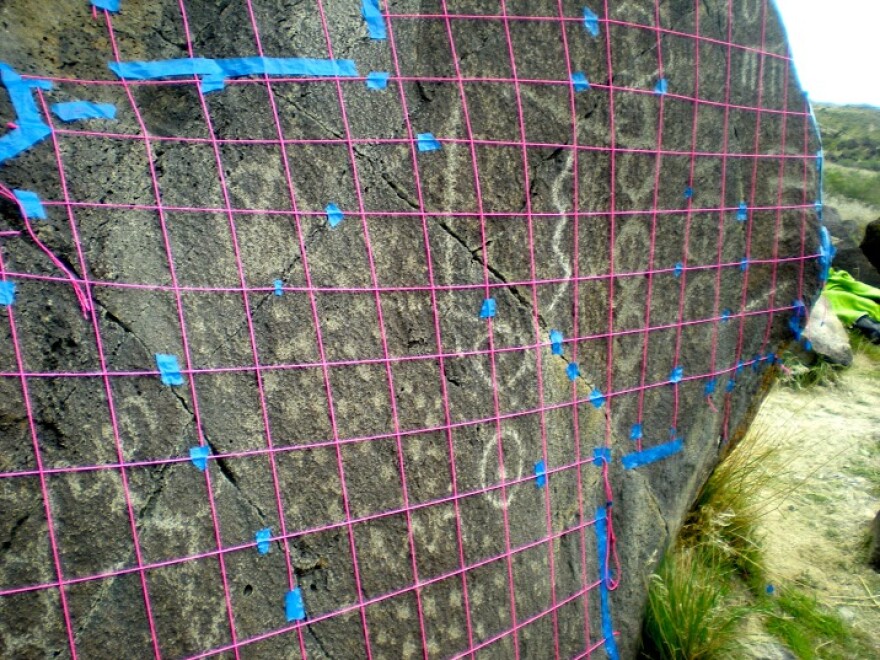Petroglyphs found outside of Melba in Southern Idaho have been around for thousands of years, but these symbols carved into solid rock are fading. Erosion and vandalism have put these pieces of history in jeopardy. Now a student club from the College of Western Idaho is working to preserve them.
Native Americans have been using the area around Celebration Park, four miles outside of Melba, for thousands of years, according to Nikki Gorrell. She heads up the Anthropology program at CWI. Gorrell says the site along the Snake River is a perfect hunting ground. Her students have even found ancient hunting blinds - rocks placed to hide hunters from game - in the area.
For the past two years, Gorrell's students in the CWI Anthropology Club, have been mapping glyphs. The first step is to find the symbols, which were painstakingly picked out of solid rock hundreds or thousands of years ago. Gorrell says no one can say for certain what the symbols stand for, but many natives consider them sacred.
To find the engravings, students fan out in a row and walk a grid, looking for the sometimes hard-to-see pictures on the rocks. Once they find one, it is flagged and assigned to a group of students.

"These are spacial-mapping technologies that will allow us to pinpoint exact petroglyphs so we can go back to them," Gorrell says, "and not worry about wandering aimlessly. Because this is a huge boulder field."
Using the gold standard, the American Rock Art Research Association Guidelines, the students are systematically mapping the engravings.
Gorrell says students 'grid' each rock. "The whole boulder has to be gridded with this fluorescent string that's taped all over the rock so that we can use that to accurately sketch it."
The sketch must be scaled down, a very time consuming part of the job. The rock is also carefully photographed.
The data is put into an online spatial database called ArcGIS. There, people from all over the world can find the GPS coordinates of the petroglyphs and see the photos and sketches the club has recorded. The club has been working on making this archive since March 2014.
Gorrell says when her students are in the field, surrounded by petroglyphs, they call it 'magical.' She says that's true.
Gorrell says there are thousands of years of tradition of people being drawn to this spot. And she believes there must be something special about the area.

"I think it's awakening people to appreciate whatever that is. And maybe we don't have to know what they mean to appreciate them," Gorrell says. "We can value them as they are. Maybe they can help us understand more about the people that actually pecked these images into the stones."
Find Samantha Wright on Twitter @samwrightradio
Copyright 2015 Boise State Public Radio




